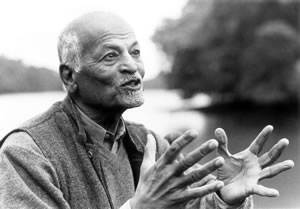Satish Kumar
Have you ever heard of the man who walked all the way from
India through four countries barefooted for a pacifist act he called a “Peace Walk”. The idea was to prevent
the use of nuclear weapons. So he walked from India with some companions
through the four nuclear armed countries
(Washington, London, Paris and Moscow). Based on my ideology of Satish’s
empathy, the reason behind this walk was achieved temporarily and we know the balderdash
(nonsense) rant between North Korea vs.
Trump charade. He is one of those pacifist (a
person against war) that the world truly needs right now. Defending the
whole criticism against him that his Peace walk was futile, he gave one of the best
heartfelt replies ever:
“Look at what realists
have done for us. They have led us to war and climate change, poverty on an
unimaginable scale, and wholesale ecological destruction. Half of humanity goes
to bed hungry because of all the realistic leaders in the world. I tell people
who call me "unrealistic" to show me what their realism has done.
Realism is an outdated, overplayed and wholly exaggerated concept.”
He was partially right, realist have a more horizontal
thinking line which led to destroying virtually all ecological echelon. Being realistic is much closer to standard pessimism, i.e.
downplaying the good things and seeing the bad as inevitable. There has to be
flexibility of the rules, this is when equality supersedes equity.
FACTS ABOUT THE ICON
NAME: SATISH KUMAR
DATE OF BIRTH: 9
August 1936.
OCCUPATION: EDITOR
AWARDS: (Honorary
Doctorate in Education, Plymouth University); (Honorary Doctorate in
Literature, University of Lancaster); (Honorary Doctorate in Law, University of
Exeter; Jamnalal Bajaj International Award)
Recommendations:
You can also check out one of the books he edited: You
Are, Therefore I Am: A Declaration of Dependence (2002)

Comments
Post a Comment
Jarring comments...